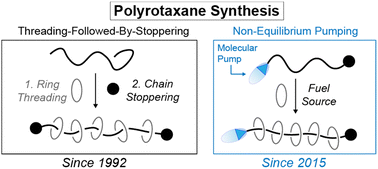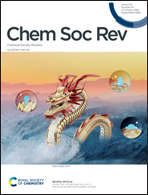Polyrotaxanes and the pump paradigm
Abstract
The year 2022 marks the 30th anniversary of the first reports of polyrotaxanes in the scientific literature. During the past three decades, many combinations of molecular rings and polymer chains have been synthesised and characterised. Until recently, however, the permutations of polyrotaxanes available to researchers were limited by synthetic methods which typically relied on an innate affinity between the molecular rings and polymer chains. With the advent of oligorotaxane-forming molecular pumps in 2015, it has now become possible to pump multiple rings against their will onto oligomer and polymer chains which have little or no affinity for the rings. These molecular pumps, which can recruit rings actively from solution to form precise polyrotaxanes, represent a major breakthrough in the field. This Tutorial Review highlights key milestones in the synthesis and investigation of polyrotaxanes along with recent developments in the synthesis and theory relating to molecular pumps. Polyrotaxane properties, arising from their topologies, have allowed them to steal a march on traditional polymers in a wide range of applications in materials, electronic and biological science, from slide-ring gels to robust coatings on cell phones, from molecular wires to flexible binders for battery anodes, from efficient multivalent protein binders to bio-cleavable polyplexes for cellular DNA delivery. Molecular pumps have the potential to blaze a contemporary trail for the synthesis of precise mechanically interlocked materials, especially those dependent on non-equilibrium chemistry and those related to energy storage and nanomedicine.



 Please wait while we load your content...
Please wait while we load your content...